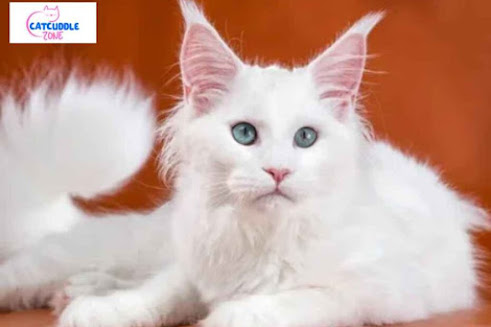How Many Paws Does a Cat Have? Complete Feline Paw Guide
Cats are fascinating creatures—graceful, agile, and full of charm. But have you ever paused to wonder, "How many paws does a cat actually have?" It might seem like a simple question, but the anatomy, function, and quirks of a cat’s paws are more interesting than you might expect. In this complete feline paw guide, we’ll explore the basics, fun facts, and deeper meaning behind those adorable little feet.
🌐 For more cat insights, visit our full guide here: https://catcuddlezone.com/how-many-paws-does-a-cat-have/
The Simple Answer: Four Paws
Most cats have four paws—two in the front and two in the back. Each paw plays a unique role in helping cats move, hunt, climb, and interact with their environment. But there's more than meets the eye.
Let’s break it down:
-
Front Paws (Forepaws): These are highly sensitive and act almost like hands. Cats use them for grabbing toys, grooming, and even “kneading.”
-
Back Paws (Hind Paws): These provide power and speed. They're responsible for those incredible leaps and landings cats are known for.
How Many Toes Does a Cat Have?
A typical cat has a total of 18 toes:
-
5 toes on each front paw
-
4 toes on each back paw
But not all cats are typical!
Polydactyl Cats: Extra-Toed Wonders 🐾
Some cats are born with extra toes, a condition known as polydactyly. These cats can have 6 or more toes on each paw, most commonly on the front. This genetic trait is usually harmless and even beneficial for balance and climbing. Famous polydactyl cats include those at Ernest Hemingway’s home in Key West, Florida—thus the nickname "Hemingway cats."
Anatomy of a Cat’s Paw
Cat paws may look soft and squishy, but they’re complex structures built for versatility.
1. Paw Pads
These are the thick, cushioned parts underneath a cat’s toes and foot. They:
-
Absorb shock when jumping
-
Help with silent stalking of prey
-
Act as sweat glands for thermoregulation
2. Claws
Each toe has a retractable claw that stays hidden until needed. Cats use their claws for:
-
Climbing
-
Defense
-
Marking territory
-
Scratching (which also stretches their back and legs)
3. Digital Pads
Each toe has a digital pad. Together, these contribute to a cat’s excellent grip and balance.
4. Carpal Pad
Located higher up on the front legs, this pad acts like a brake when landing from high jumps or navigating steep surfaces.
What Do Cats Use Their Paws For?
Besides walking, jumping, and climbing, cats use their paws in many other adorable and practical ways.
-
Kneading: This instinctive motion dates back to kittenhood, when they kneaded their mother's belly for milk. It often signals comfort or contentment in adult cats.
-
Grooming: Cats frequently lick their front paws and use them like washcloths to clean their face and ears.
-
Communication: Paws are part of feline body language. Swatting, pawing, or even tapping can convey emotion or establish boundaries.
Common Paw Problems to Watch For
A cat’s paws are sensitive and sometimes vulnerable. Here are a few signs something might be wrong:
-
Limping or favoring one paw
-
Swollen or bleeding paw pads
-
Overgrown claws
-
Redness or irritation between toes
-
Chewing or licking paws excessively
If you notice these signs, a trip to the vet is always a good idea. Paws are vital to your cat's quality of life.
Fun Facts About Cat Paws
-
Cats are digitigrade walkers. They walk on their toes, not their whole foot—giving them stealth and speed.
-
Paw pad colors often match their fur or nose. Black cats usually have black pads, orange cats may have pink ones.
-
They can feel vibrations through their paws, which helps them detect approaching animals or prey.
-
Each paw is unique, just like fingerprints in humans!
Are Front and Back Paws the Same?
Not quite. Here are a few differences:
-
Front paws are more dexterous and often used to manipulate objects.
-
Back paws are stronger and provide thrust for running and jumping.
-
Claw shape differs slightly too—rear claws are often sharper due to less frequent use.
Conclusion: More Than Just Cute Feet
So, to answer the question: Most cats have four paws and eighteen toes, unless they’re polydactyl. But their paws do so much more than help them get around—they’re essential tools for grooming, hunting, expressing emotion, and maintaining balance.
The next time your cat paws at your hand or stretches across the floor, take a moment to appreciate the complexity and beauty of those tiny, powerful feet.
💡 Want to dive deeper into the fascinating world of feline paws? Check out the full article at https://catcuddlezone.com/how-many-paws-does-a-cat-have/




Comments
Post a Comment